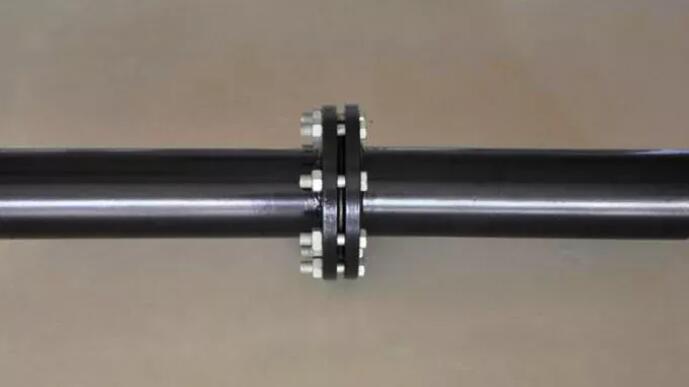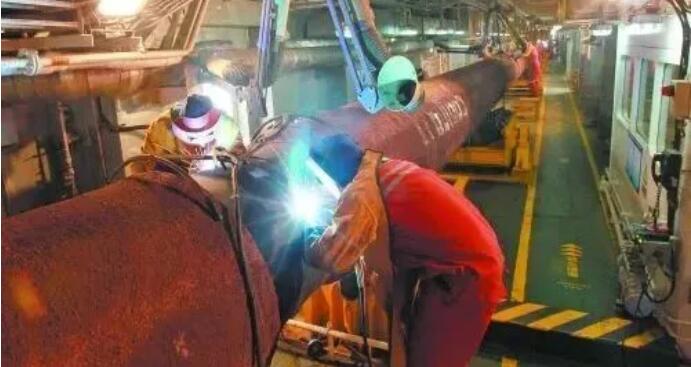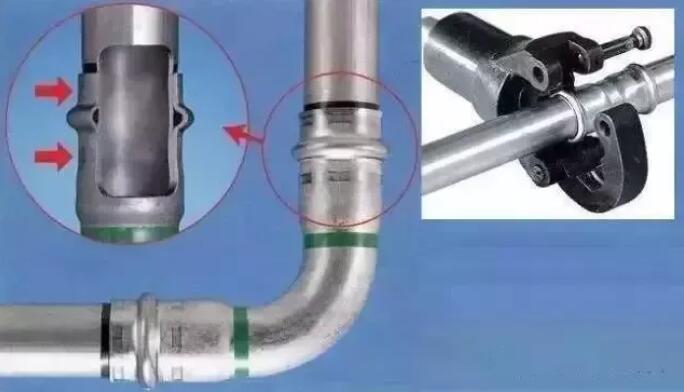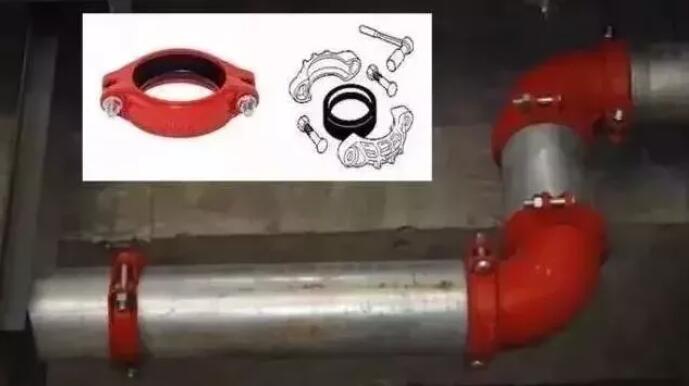8 commonly used connection methods for pipelines
The eight connection methods of pipelines are flange connection, welding, threaded connection, ferrule connection, compression connection, groove connection, hot melt connection, and socket connection.
Pipeline refers to a device connected by pipes, pipe connectors, valves and other parts for transporting gas, liquid or fluid with solid particles.
Flange connection
Flange connection is to fix two pipes, pipe fittings or equipment on a flange plate first, then add flange pads between the two flange plates, and finally use bolts to tighten the two flange plates. It is tightly coupled with a detachable joint.
The main features of flange connection are easy disassembly, high strength and good sealing performance.
When installing the flange, the two flanges must be kept parallel.
The sealing surface of the flange must not be damaged and must be cleaned. Flange gaskets should be selected according to design regulations.
Pipes with larger diameters often use flange connections.
Flange connections are generally used in main pipelines to connect valves, check valves, water meters, water pumps, etc., as well as on pipe sections that require frequent disassembly and maintenance.

welding
Metal pipes are often connected by welding. Welding is a manufacturing process and technology that uses heat, high temperature or high pressure to join metals. There are usually the following methods:
Fusion welding – heating the workpieces to be joined to cause partial melting to form a molten pool. If necessary, a molten filler can be added to assist. The molten pool cools and solidifies before joining.
Pressure Welding – The welding process must apply pressure to the weldment.
Brazing – Using a metal material with a lower melting point than the base metal as the filler metal, the liquid filler metal is used to wet the base metal, fill the joint gap, and mutually diffuse with the base metal to achieve the connection of the weldment.

Snap-on connection
Press-fit connections are common in thin-walled pipe connections. It uses radial shrinkage external force (hydraulic clamp) to clamp the pipe fittings on the pipe, and uses O-ring seals to stop water to achieve the connection effect.
Similar principles include ring-pressure connections.
The snap-on connection is easy to install, but it is more suitable for exposed pipes in cold water systems and direct drinking water systems.
Because it will be troublesome to replace the sealing ring in the pipe when it ages.
The use of hot water systems should be avoided as much as possible, because the thermal expansion and contraction properties of sealing rings and metal materials are different, and sealing rings are more likely to age after hot and cold cycles.
Therefore, it is generally not recommended to use pipes with this connection method for concealed pipes and hot water systems.

Threaded connection
The threaded connection adopts the method of tightening two connecting parts with inner and outer interfaces of conical pipe threads, and the connection effect is achieved through the pressure sealing of the connection threads.
It is widely used in traditional galvanized steel pipes.
Threaded connections are suitable for galvanized steel pipes with a pipe diameter less than or equal to 100mm, and are mostly used for surface-mounted pipes.
Because the screw threads of threaded connections often damage the surface of the galvanized layer, it is easy to cause corrosion of the pipeline.
socket connection
Socket connections are mainly used for cast iron pipes, concrete pipes, ceramic pipes, plastic pipes, etc. with socket joints. There are two types: flexible connections and rigid connections.
Rigid socket connection is to use the socket of the pipe to insert into the socket of the pipe. After alignment, caulking material is first used to caulk, and then sealed with sealing material.
The rigid connection is sealed with asbestos cement or expandable filler. Lead sealing can be used in important occasions to ensure that the joint is sealed. It becomes a solid closed whole.
Grooved connection
Grooved connection, also known as clamp connection, can be used to connect galvanized steel pipes with a diameter greater than or equal to 100mm in fire water, air conditioning hot and cold water, water supply, rainwater and other systems.
It has the characteristics of simple operation, no impact on the original characteristics of the pipeline, safe construction, good system stability, convenient maintenance, saving labor and time, etc.

hot melt connection
Hot melt connection is the pipe connection method used for PPR pipes. It uses heating to make the PPR connection parts reach the melting point and melt, and uses sockets to fuse the pipes and pipe fittings together.
The hot-melt connection is a highly reliable permanent connection. Once the hot-fusion is completed, there will be almost no water leakage accidents.
PPR pipes have been widely used because of this reliable connection.
Electrofusion connection
Electrofusion connection is generally a connection method used to weld PE pipes.
By energizing and heating the copper wire embedded in the inner wall of the pipe, the plastic resin in the fusion zone undergoes a phase change.
The polymer chain segments penetrate and strengthen each other under a certain pressure.
The materials are recrystallized and arranged by cooling, so that the fusion zone is combined into a whole. . Compared with electrofusion welding, the quality of hot melt welding can be directly reflected by the amount of flanging and peeling.
The welding strength and welding stability are relatively high, and the quality of the welded pipeline can be basically guaranteed by checking the welding joint.
